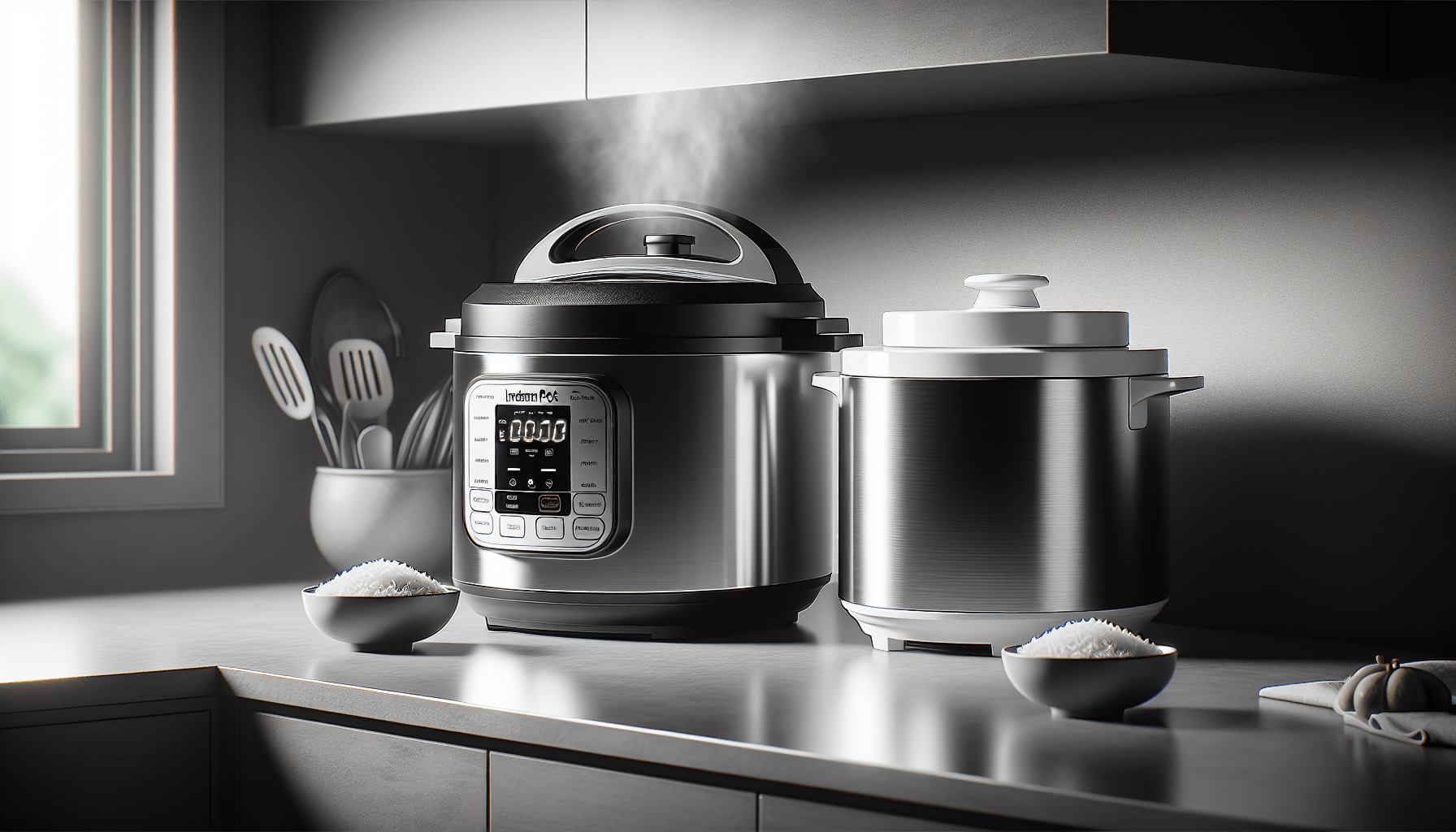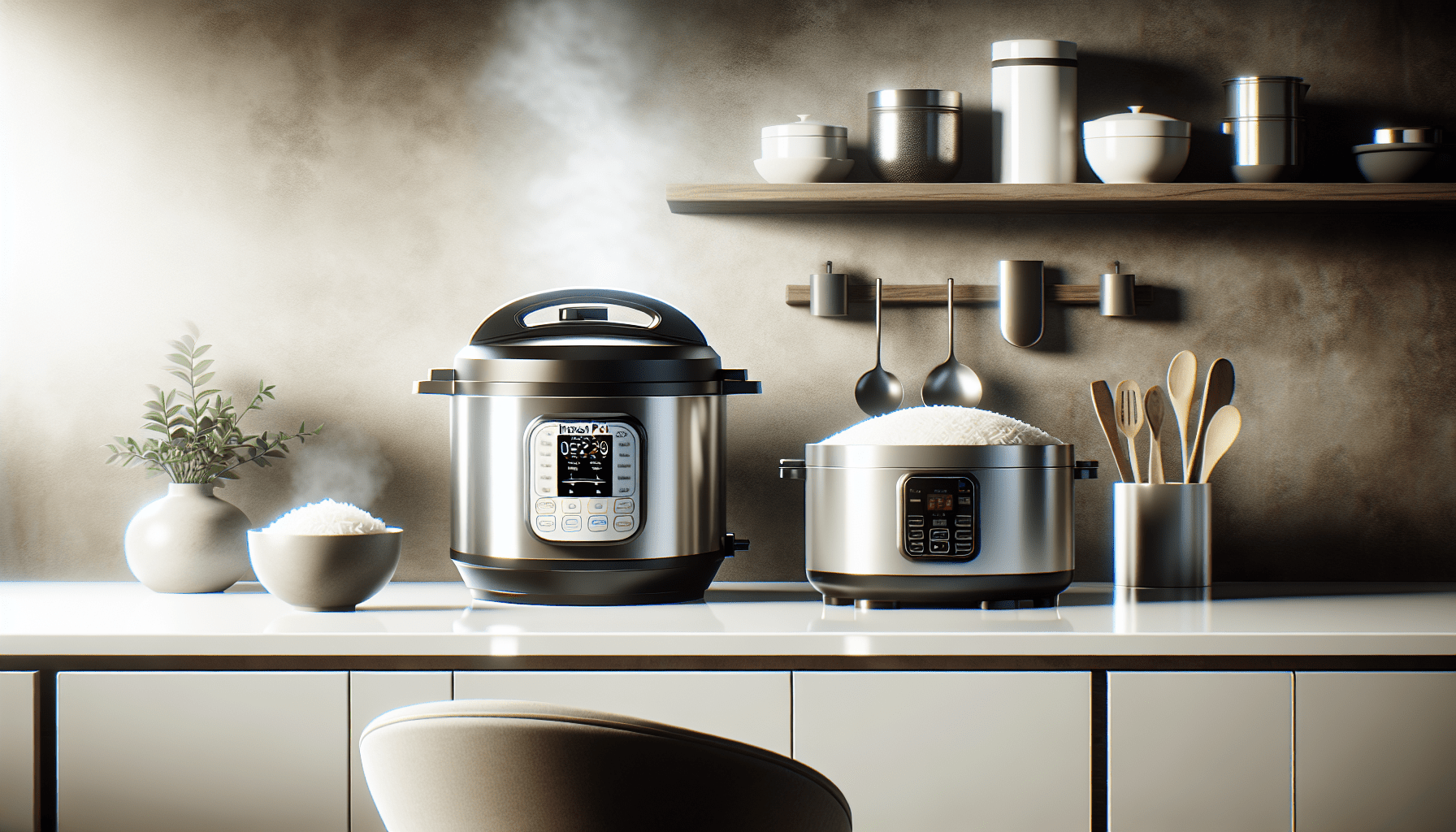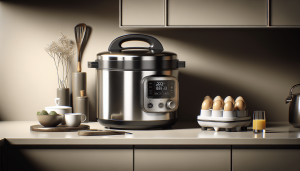In our latest culinary showdown, “Instant Pot vs Rice Cooker,” we dive deep into the key differences between these two essential kitchen gadgets. We explore their functionality, versatility, and efficiency, helping you understand which one better suits your cooking needs. Whether we’re looking for a quick meal solution or a specialized appliance for perfect rice, this article is packed with insights and tips to guide us in making the best choice for our kitchen. Have you ever found yourself standing in your kitchen, weighing the merits of an Instant Pot against a Rice Cooker? It’s a common dilemma for anyone looking to streamline their cooking process. Each appliance has its strengths, and making the right choice can greatly enhance your culinary experience. Together, let’s explore the key features, advantages, and disadvantages of both the Instant Pot and Rice Cooker to help you make an informed decision.
What is an Instant Pot?
The Instant Pot is a modern kitchen marvel designed to simplify and expedite cooking. It’s a versatile appliance that combines several kitchen devices into one, making it a space-saver and a time-saver.
Key Functions of an Instant Pot
An Instant Pot is known for its multi-functionality. Here are some of the main tasks it can perform:
- Pressure Cooker: Quickly cooks meals that usually take a long time.
- Slow Cooker: Perfect for creating tender, flavorful dishes over a long period.
- Rice Cooker: Cooks rice to perfection.
- Steamer: Steams vegetables, dumplings, and more.
- Sauté Pan: Allows you to brown meats and vegetables before pressure or slow cooking.
- Yogurt Maker: Prepares homemade yogurt with ease.
Rice Cooker: A Specialized Appliance
A rice cooker, while simpler than an Instant Pot, excels at its primary function: cooking rice. It ensures perfectly cooked rice with minimal effort, every time.
Key Functions of a Rice Cooker
Although rice cookers are specialized appliances, they sometimes come with additional features:
- Cooking Various Types of Rice: From white rice to brown rice and jasmine rice.
- Keeping Rice Warm: Maintains an optimal temperature for rice to stay warm and ready to serve.
- Steaming: Steams vegetables and sometimes fish, enhancing its versatility.
- Porridge Maker: Some advanced models can cook porridge and other grains.

Pros and Cons: Instant Pot vs Rice Cooker
To make an informed decision, it’s essential to consider the advantages and disadvantages of both appliances.
Pros and Cons of an Instant Pot
| Advantages | Disadvantages |
|---|---|
| Multi-functional: Can replace several kitchen devices | Often bulkier and occupies more counter space |
| Quick cooking times thanks to pressure cooking | Learning curve due to the variety of functions |
| Can cook a wide variety of foods | More expensive compared to basic rice cookers |
| Energy efficient | Heavier and less portable |
| Programmable settings for convenience | Requires careful cleaning and maintenance |
Pros and Cons of a Rice Cooker
| Advantages | Disadvantages |
|---|---|
| Specializes in perfect rice cooking every time | Limited to just a few cooking functions |
| Simple to use with minimal buttons | Limited versatility compared to an Instant Pot |
| Often more affordable | Not suitable for quick cooking other types of food |
| Lightweight and easy to store | Some models may lack additional features |
Performance Comparison
We should now dive deeper into the performance comparison between an Instant Pot and a Rice Cooker, focusing on different aspects like cooking time, ease of use, and variety of dishes.
Cooking Time
One of the significant advantages of the Instant Pot is its speed.
- Instant Pot: Thanks to the pressure cooking function, meals that would typically take hours can be ready in a fraction of the time.
- Rice Cooker: While efficient at cooking rice, it does not offer the speed advantage for other types of meals.
Ease of Use
Both appliances have their learning curves, but they cater to different needs.
- Instant Pot: The variety of functions can be overwhelming initially, but once mastered, it’s incredibly versatile.
- Rice Cooker: Simplicity is key here. With fewer settings, it’s straightforward and easy to use.
Variety of Dishes
This is where the decision can become easier based on your cooking habits.
- Instant Pot: Flexibility is its forte. From stews, soups, and meats to yogurt and desserts, the possibilities are endless.
- Rice Cooker: Primarily designed for rice, though advanced models do offer more options like porridge and steamed dishes.

Safety Features
Safety is always a top priority in the kitchen. Both the Instant Pot and the Rice Cooker come equipped with features to ensure safe usage.
Instant Pot Safety Features
The Instant Pot includes numerous built-in safety mechanisms:
- Pressure Release Valve: Manages steam release safely.
- Lid Lock: Ensures the lid stays closed under pressure.
- Overheat Protection: Prevents the pot from overheating.
- Automatic Temperature Control: Maintains optimal temperature for cooking.
Rice Cooker Safety Features
Rice cookers are generally simpler devices, but they also incorporate important safety features:
- Automatic Shut-off: The cooker turns off once the rice is done.
- Stay-cool Handles: Prevents burns when handling the cooker.
- Lid Locking Mechanism: Keeps the lid securely in place during cooking.
Maintenance and Cleaning
Keeping our kitchen appliances clean and well-maintained ensures they last longer and work better.
Cleaning the Instant Pot
Due to its complexity, cleaning an Instant Pot requires a bit of effort:
- Inner Pot: Often dishwasher safe.
- Sealing Ring: Should be cleaned and checked regularly.
- Lid: Needs thorough cleaning, including the pressure release valve.
Cleaning the Rice Cooker
Rice cookers tend to be easier to clean, thanks to their simplicity:
- Removable Inner Pot: Typically non-stick and easy to clean.
- Steam Vent: Occasionally needs cleaning to prevent clogs.
- Exterior: Simply needs wiping down after use.
Price Comparison
Budget can often be a deciding factor when choosing between appliances. Generally, rice cookers are more budget-friendly, whereas Instant Pots offer more features at a higher price.
Instant Pot Price Range
Instant Pots come in various models, each with different features:
- Basic Models: Start around $60.
- Mid-range Models: Cost approximately $100.
- High-end Models: Can exceed $150.
Rice Cooker Price Range
Rice cookers, especially the basic ones, are generally less expensive:
- Basic Models: Start around $20.
- Mid-range Models: Cost around $50.
- High-end Models: Rarely exceed $150, even for advanced models.
Durability and Longevity
Investing in a kitchen appliance means we hope for it to last. Both appliances have a good track record for durability, but usage and care can impact their longevity.
Instant Pot Durability
The Instant Pot is built sturdy to handle the rigors of various cooking tasks:
- Material: Often made with stainless steel interiors which are robust and long-lasting.
- Usage: Regular use of multiple functions may wear it down faster.
Rice Cooker Durability
Rice cookers, while simpler, also offer reliable durability:
- Material: Often feature non-stick interiors which are easy to maintain.
- Usage: Fewer functions mean less wear and tear over time.
User Reviews and Testimonials
Hearing from other users can provide valuable insights into these appliances. Let’s take a look at some common feedback.
Instant Pot User Feedback
- “The Instant Pot has revolutionized my meal prep! I can make a week’s worth of meals in no time.”
- “It took a bit to learn all the functions, but now I can’t imagine cooking without it.”
Rice Cooker User Feedback
- “My rice cooker makes perfect rice every time. It’s simple and reliable.”
- “I love how I can start it and walk away, coming back to perfectly cooked rice.”
Conclusion
Choosing between an Instant Pot and a Rice Cooker ultimately depends on your cooking habits, space, and budget. If you seek versatility and speed, the Instant Pot might be your best bet. However, if you primarily cook rice and appreciate simplicity, a rice cooker will serve you well. Both appliances have their unique advantages, so assessing your specific needs will guide you to the right choice for your kitchen.
We hope this detailed comparison helps you make an informed decision. Happy cooking!



